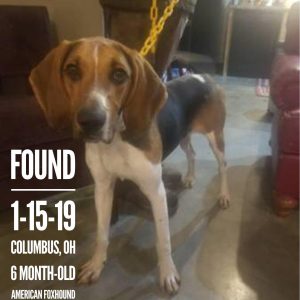Dogs are known for their energy and agility, but just like humans, they can also suffer from injuries. One common injury that dogs may experience is a torn ACL (anterior cruciate ligament) in their knee. This injury can be painful and limit their mobility, making it crucial to seek proper treatment. While surgery is often recommended for severe cases, there are some home remedies and treatments that can help alleviate the pain and aid in the recovery process.
Imagine your furry companion limping around the house, unable to run and play like they used to. It’s heart-wrenching to see them in pain, and you want to do everything you can to help them. But what if I told you that there are home treatments that could potentially save your dog from going under the knife? Yes, you heard it right! In this article, we will explore effective home remedies and techniques to treat your dog’s torn ACL, providing them with relief and a chance to regain their mobility. So, if you’re a dog lover seeking alternatives to surgery, keep reading!
When it comes to taking care of our furry friends, one common issue that pet owners may face is a torn ACL in dogs. This can be a challenging and distressing situation for both the dog and its owner. The first concern that arises when dealing with a dog’s torn ACL at home is the lack of professional guidance. Without the expertise of a veterinarian, pet owners may feel overwhelmed and unsure about the best course of action. Additionally, the financial burden of surgery and rehabilitation can be a major pain point for many dog owners. This can lead to a search for alternative home treatments that are more affordable but still effective. However, finding reliable information online can be difficult, as there is an overwhelming amount of conflicting advice and home remedies available. Sorting through this information and determining which options are safe and suitable for the dog’s condition can be a frustrating and time-consuming process.
In summary, when it comes to treating a dog’s torn ACL at home, pet owners face various challenges. The lack of professional guidance and the financial burden of surgery are significant pain points that need to be addressed. Additionally, finding reliable information online amidst conflicting advice can be a frustrating task. However, by understanding these challenges and exploring safe and suitable home treatment options, pet owners can ensure the well-being of their furry companions while also managing their own concerns. Keywords related to this topic include dog ACL tear, home treatment options, financial burden, and reliable information.
Dog Torn ACL Home Treatment: A Comprehensive Guide to Healing Your Canine Companion
Greetings, devoted dog owners! If you’re reading this article, chances are your furry friend is suffering from a torn ACL. Don’t fret – we’re here to provide you with a comprehensive guide on how to treat this common canine injury from the comfort of your own home. Before we dive into effective remedies, it’s important to understand what an ACL tear entails and why early intervention is crucial for your dog’s well-being.
{{section1}} Understanding ACL Tears in Dogs
The anterior cruciate ligament (ACL) is a vital component of a dog’s knee joint. It connects the femur to the tibia, providing stability and preventing excessive forward movement of the tibia. Unfortunately, dogs, particularly larger breeds, are prone to ACL tears due to their active lifestyles and genetic predispositions.
An ACL tear typically occurs during sudden movements, such as jumping, running, or changing direction abruptly. You may notice your dog yelping in pain, limping, or favoring one leg over the other. Swelling, stiffness, and difficulty bearing weight are also common symptoms. If you suspect your dog has torn their ACL, it’s crucial to seek veterinary advice promptly to confirm the diagnosis and determine the most appropriate treatment plan.
{{section1}} Initial Steps for Home Treatment
While professional veterinary care is essential for diagnosing and managing an ACL tear, there are several steps you can take at home to provide immediate relief to your beloved companion:
- Rest: Restrict your dog’s physical activity to prevent further damage to the injured ligament. Confine them to a quiet, comfortable space where they can rest undisturbed.
- Cold Compress: Apply a cold compress or ice pack wrapped in a towel to the affected knee for 10-15 minutes several times a day. This will help reduce swelling and alleviate pain.
- Elevation: Elevate your dog’s leg using a soft cushion or pillow while they rest. This will aid in reducing fluid buildup and enhance comfort.
- Assistive Devices: Consider using a supportive brace or wrap designed specifically for canine ACL injuries. These devices provide stability and limit movement, allowing the torn ligament to heal more effectively.
{{section1}} Natural Remedies to Promote Healing
While these initial steps are crucial, there are also natural remedies you can incorporate into your dog’s home treatment plan to expedite the healing process:
- Weight Management: Maintaining an optimal weight is essential for reducing strain on your dog’s injured knee. Consult your veterinarian to determine a suitable diet and exercise regimen for your furry friend.
- Dietary Supplements: Certain supplements, such as glucosamine and chondroitin, can promote joint health and reduce inflammation. Omega-3 fatty acids are also beneficial for their anti-inflammatory properties.
- Physical Therapy: Gentle, controlled exercises can help your dog regain strength and mobility in the affected leg. Consult a veterinary professional or certified canine physical therapist for guidance on appropriate exercises and techniques.
- Massage and Heat Therapy: Massaging the surrounding muscles and applying heat through warm compresses or a heating pad can improve blood circulation and provide pain relief.
{{section1}} The Role of Nutrition and Rest
Proper nutrition and ample rest are vital components of your dog’s recovery process. While it may be tempting to shower them with treats and excessive attention, maintaining a balanced diet and allowing sufficient rest is crucial.
Ensure your dog’s meals consist of high-quality proteins, healthy fats, and a variety of fruits and vegetables. Avoid feeding them processed foods or table scraps, as these can lead to weight gain and inflammation.
Additionally, providing a calm and stress-free environment will contribute to your furry friend’s overall well-being. Minimize exposure to loud noises, limit interactions with excitable pets or children, and create a cozy space where they can relax and recuperate.
{{section1}} The Importance of Rehabilitation Exercises
As your dog begins to show signs of improvement, gradually introduce rehabilitation exercises into their daily routine. These exercises aim to strengthen the surrounding muscles and improve joint stability, aiding in a successful recovery:
- Range of Motion Exercises: Gently flex and extend your dog’s affected leg to maintain flexibility and prevent stiffness.
- Weight-Shifting Exercises: Encourage your dog to shift their weight from one leg to another while standing or walking. This helps them regain balance and strengthens the injured leg.
- Balance and Coordination Exercises: Utilize balance boards or unstable surfaces to challenge your dog’s stability. This stimulates muscle growth and improves joint control.
- Aquatic Therapy: Swimming or hydrotherapy can provide low-impact exercise while reducing stress on the joints. Consult a professional to ensure safe and effective aquatic therapy for your dog.
{{section1}} Long-Term Care and Professional Guidance
While home treatment can significantly aid in your dog’s recovery, it’s important to remember that professional veterinary care is essential throughout the healing process. Regular check-ups and consultations with your veterinarian will ensure your dog receives appropriate pain management and monitor their progress.
In severe cases or when conservative treatment methods fail, surgical intervention may be necessary. Consult a veterinary surgeon specializing in orthopedics to discuss surgical options if deemed necessary for your furry friend’s well-being.
Remember, every dog is unique, and the severity of ACL tears can vary. Tailor your home treatment plan to suit your dog’s individual needs and always seek professional advice before implementing any new remedies or exercises.
By following these guidelines, providing your canine companion with love, patience, and proper care, you’ll greatly contribute to their healing journey. Together, we can help restore their joyful spirit and get them back on their paws in no time!
Dog Torn Acl Home Treatment
When it comes to treating a dog with a torn ACL (anterior cruciate ligament) at home, there are several options available to pet owners. A torn ACL is a common injury in dogs that can cause pain, lameness, and difficulty walking. While surgical intervention may be necessary in severe cases, many pet owners prefer to explore non-surgical treatment options first. Dog torn ACL home treatment involves rest, physical therapy exercises, pain management, and natural remedies.
Rest is essential for allowing the torn ACL to heal properly. Restricting your dog’s movement by confining them to a small area or using a crate can help prevent further damage and promote healing. Physical therapy exercises, such as range of motion exercises and controlled walking, can also aid in recovery. These exercises should be performed under the guidance of a veterinarian or a certified canine rehabilitation therapist to ensure they are done correctly and safely.
Pain management is crucial for dogs with a torn ACL. Over-the-counter pain medications like non-steroidal anti-inflammatory drugs (NSAIDs) can help alleviate pain and reduce inflammation. However, it is important to consult with a veterinarian before giving any medication to your dog to ensure proper dosage and to rule out any potential side effects.

In addition to rest and physical therapy, there are natural remedies that can assist in the healing process. Supplements like glucosamine and chondroitin sulfate can help support joint health and reduce inflammation. Fish oil, which contains omega-3 fatty acids, can also have anti-inflammatory properties. Herbal remedies such as turmeric and ginger have been used to reduce pain and inflammation in both humans and animals.
Listicle: Dog Torn Acl Home Treatment
- Rest: Confine your dog to a small area or use a crate to restrict movement and promote healing.
- Physical therapy exercises: Perform range of motion exercises and controlled walking under professional guidance.
- Pain management: Consult with a veterinarian for appropriate pain medications and dosage.
- Supplements: Consider giving your dog glucosamine, chondroitin sulfate, and fish oil to support joint health and reduce inflammation.
- Natural remedies: Explore herbal options like turmeric and ginger to help alleviate pain and inflammation.
By combining these dog torn ACL home treatment methods, pet owners can provide their furry friends with the best possible care and support during the healing process. However, it is essential to consult with a veterinarian to ensure an accurate diagnosis and to determine the most suitable treatment plan for your dog’s specific condition.
Question and Answer: Dog Torn ACL Home Treatment
1. What is a torn ACL in dogs?
A torn ACL, or anterior cruciate ligament, is a common knee injury in dogs. It occurs when the ligament that supports the knee joint becomes damaged or ruptured, leading to instability, pain, and difficulty in walking or bearing weight on the affected leg.2. Can a torn ACL in dogs be treated at home?
While complete recovery from a torn ACL typically requires surgical intervention, there are several home treatment options available to manage the symptoms and aid in your dog’s comfort during the healing process.3. What are some home remedies for a dog with a torn ACL?
Some effective home remedies for a dog with a torn ACL include rest and restricted activity, cold compress application, weight management, joint supplements, and physical therapy exercises recommended by a veterinarian.4. When should I seek professional help for my dog’s torn ACL?
It is essential to consult with a veterinarian if you suspect your dog has a torn ACL. They can provide an accurate diagnosis, recommend appropriate treatment options, and guide you in implementing the best home care practices for your furry friend.
Conclusion of Dog Torn ACL Home Treatment
In conclusion, while home treatment cannot completely heal a torn ACL in dogs, it can play a crucial role in managing symptoms and supporting the healing process. By providing rest, applying cold compresses, maintaining a healthy weight, using joint supplements, and following veterinarian-recommended physical therapy exercises, you can help improve your dog’s comfort and potentially enhance their recovery. However, it is always important to consult with a professional to ensure the best course of action for your dog’s specific condition.
Thank you for visiting our blog today! We hope you found the information on dog torn ACL home treatment helpful and informative. While dealing with a torn ACL in your furry friend can be a challenging and worrisome experience, there are several effective home remedies and techniques that can aid in their recovery. In this closing message, we would like to summarize some key points from the article and offer a few additional tips to ensure the best possible care for your beloved pet.
First and foremost, it is essential to consult with a veterinarian to confirm the diagnosis and severity of your dog’s torn ACL. They will provide expert guidance and may recommend surgery or other forms of professional treatment depending on the individual case. However, if surgery is not immediately necessary or you prefer to explore home treatment options, there are various steps you can take to alleviate pain and aid in the healing process.
One of the most important aspects of dog torn ACL home treatment is managing their activity level. Rest and restricted movement are crucial in the initial stages to prevent further damage and promote healing. Utilizing a dog crate or playpen can help limit their mobility and ensure they do not exert themselves too much. Gentle exercises, such as controlled leash walks and hydrotherapy, can be gradually introduced under veterinary supervision to improve strength and flexibility in the affected leg.
In addition to managing activity, providing your dog with a comfortable and supportive environment is essential. Investing in an orthopedic bed or using padded surfaces can help relieve pressure on their joints and make them more comfortable during rest periods. Applying cold therapy, such as ice packs or frozen vegetables wrapped in a cloth, can reduce swelling and inflammation. Likewise, warm compresses or heating pads can help relax muscles and increase blood flow to the affected area.
We hope these tips and insights have been valuable in understanding how to approach dog torn ACL home treatment. Remember, always consult with a veterinarian for professional advice tailored to your pet’s specific needs. With proper care, patience, and love, your furry friend can make a successful recovery and continue to enjoy a happy and active life. Thank you again for visiting our blog, and we wish you and your four-legged companion all the best!





